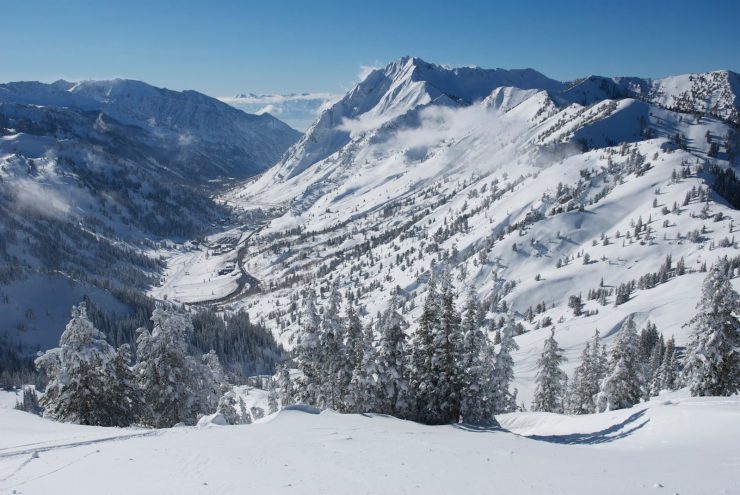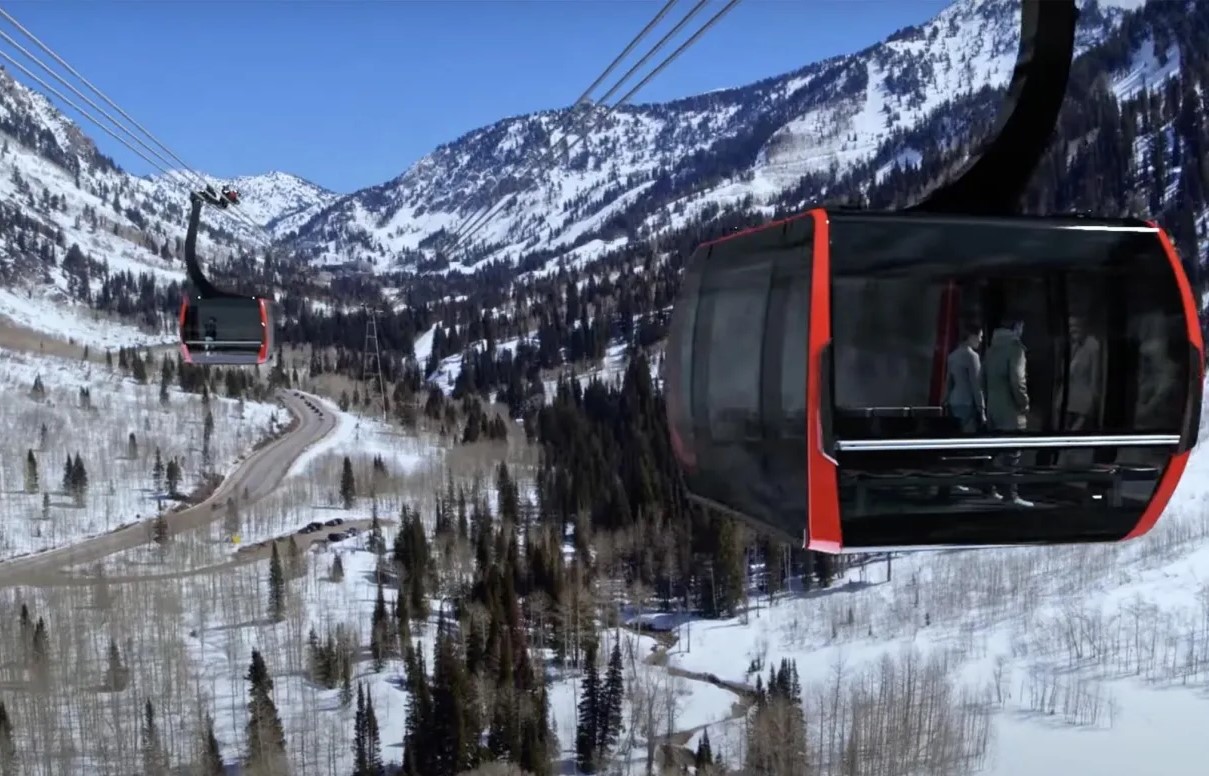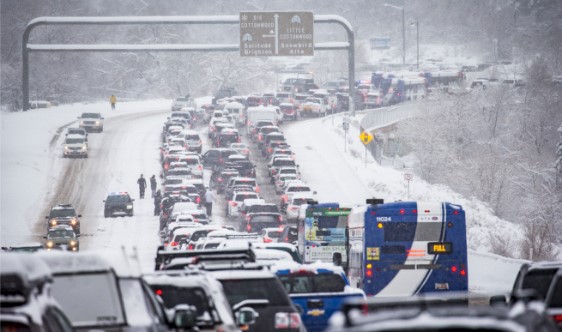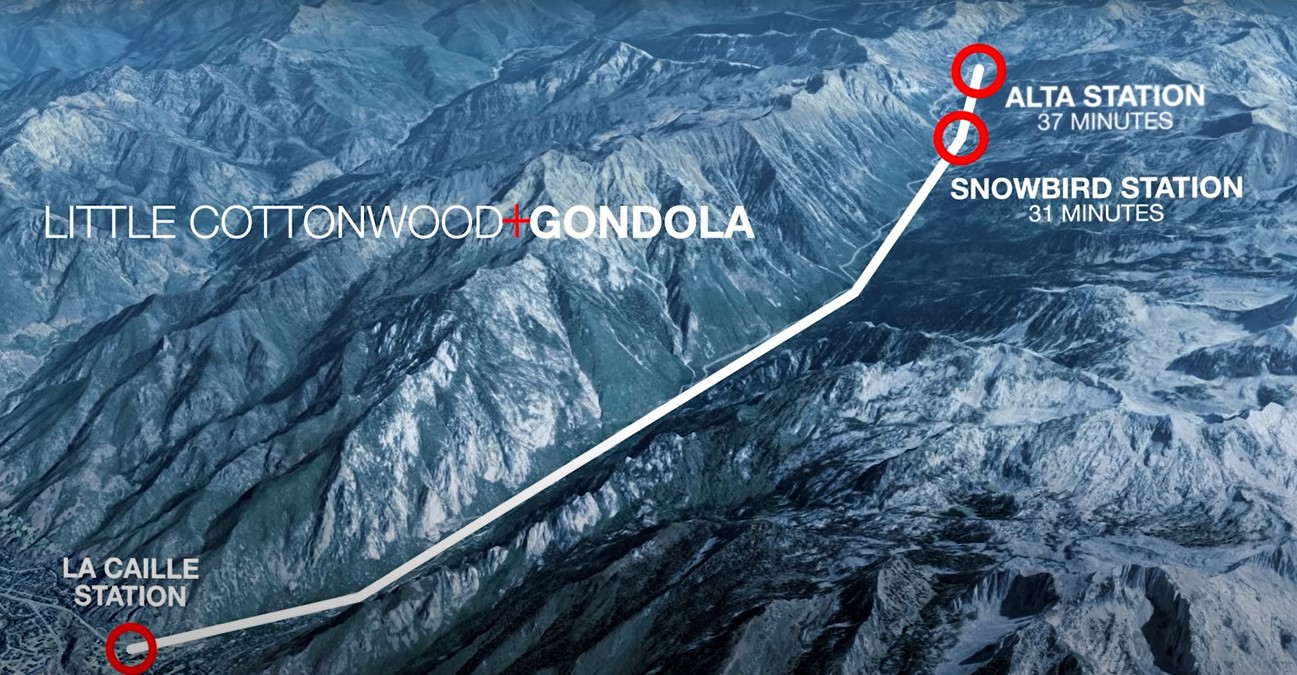
The Utah Department of Transportation (UDOT) has been working on a solution to the traffic that plagues Little Cottonwood Canyon for some time now. On August 31, they officially announced they prefer a gondola as the top choice to achieve that goal, saying the gondola meets the “need and provides the highest travel reliability for the public.”
The recommendation came after a thoughtful environmental impact study (EIS) that considered both the gondola and an enhanced bus system. Click here for the Final EIS Summary Fact Sheet.

What happens now?
There is now a 45-day public review period and a comment period from September 2 through October 17.
It could take a few years to get funding for the project, so UDOT is also recommending phasing in an enhanced bus system until the gondola is built. This would include tolling and restrictions on single-occupancy vehicles and the construction of mobility hubs. Highway widening is not part of the recommendation. They feel this will alleviate some congestion in the short term while the gondola will be the long-term solution.
Lawmakers in the state ultimately have the final say if the project will move forward. For that reason, there is still a lot of work to be done to convince the legislature that the project should become a reality.
A closer look at the two groups promoting and opposing the gondola
The gondola concept is a divisive one, with many people strongly supporting it, or defiantly against it. Two organizations on polar opposite sides have emerged in the debate for or against the gondola. They are Gondola Works and Friends of Little Cottonwood Canyon.
Gondola Works
Gondola Works is the group that supports the gondola. It was started by Snowbird Resort, which would benefit greatly from the gondola. It is funded by other local companies and ski resorts, including Alta Ski Area, which would be another benefactor. The gondola would deliver skiers and riders right to their base areas. Last year Snowbird quietly purchased the land where the potential gondola would be built. This acquisition was to ensure the land would be available. It has said it would sell the land at cost or donate it if the gondola is chosen.
Gondola Works has produced detailed illustrations and motivating commercials to prop up the gondola. The ad placement has been on TV, billboards, social media, and even direct mail. Its marketing efforts have put the project at the forefront of the public eye. You can view one of its advertisements below.

Its primary arguments for the gondola are a quiet, clean option with pristine canyon views. It will be zero-emissions, carbon neutral, have a high capacity, and be sustainable. The gondola would be able to transport riders during snowy weather conditions when the traffic is the worst, greatly increasing safety. It could also run when the road is closed due to avalanche danger. It claims cleaner air, cleaner water, and less road construction are also reasons to be in support.
Gondola Works touts that the experience of getting to the greatest snow on earth should also be great.

Friends of Little Cottonwood Canyon
On the other side are Friends of Little Cottonwood Canyon who oppose the gondola. It was started in 2021 as a nonprofit. It is funded by donors and have a political action committee (PAC) that distributes money to its preferred political candidates. Knowing that the legislature will have the final say on the project, its efforts have been focused on lobbyists and public ad campaigns.
Reasons for opposing the gondola include the immense cost that ultimately taxpayers would have to pay. It is estimated that it would cost over $500 million. Some experts believe it could cost even more. This is still projected to cost less than an alternative option of an expanded bus system, which the group also opposes.
Another argument is the gondola would be invasive and take away from the natural beauty of the area. Additionally, it would only benefit developers and two private ski resorts. You can view one of Friends of Little Cottonwood Canyon’s advertisements below.
https://youtu.be/TgIVfj8x7WE
Bottom line
This is a huge decision for lawmakers and UDOT. It affects so many people and comes at a very high cost. Let’s hope they get it right.

Too bad 90% of the traffic approaching the canyon in the morning is on Wasatch BLVD. Once you are at La Caille, you are essentially in the clear anyways. Really glad to hear all the out of towners and fairweather skiers like this idea, I look forward to you riding it straight to Alta and staying off the road and on the steep side of the ski boundary.
Im glad we finally found a comprehensive solution to the traffic for, *checks notes*, one out of the two canyons with traffic issues.
I’m surprised light rail (cog-trail) wasn’t considered in the third lane (or underground), along with snow sheds covering the avy zones. Also could do a loop and service Big C.C. too. Can’t we just learn from how they do it in the Alps?
After the non-skiing tax payers of Utah are soaked to the tune of six billion dollars. Skiers previously trapped in canyon traffic will instead be trapped in gondola base station traffic awaiting their chance to pay to park, pay to ride, and pay for the commemorative T-shirt. See https://www.lccfriends.org
It’s difficult to fathom such a spectacular ride that would be and how it would change the game so much. I can hardly wait.
It’s the wealthy people at the base of the canyon who oppose the gondola. They do so because they don’t want the base station in their neighborhood. Cottonwood Heights (the neighborhood where the base station would be) is a area with expensive houses (million plus) and people that have the money to oppose it. That’s their main reason for opposition, but they won’t say that.
The gondola is by far the most energy efficient plus lowest operating cost. It does not need snow removal. Typically higher reliability.